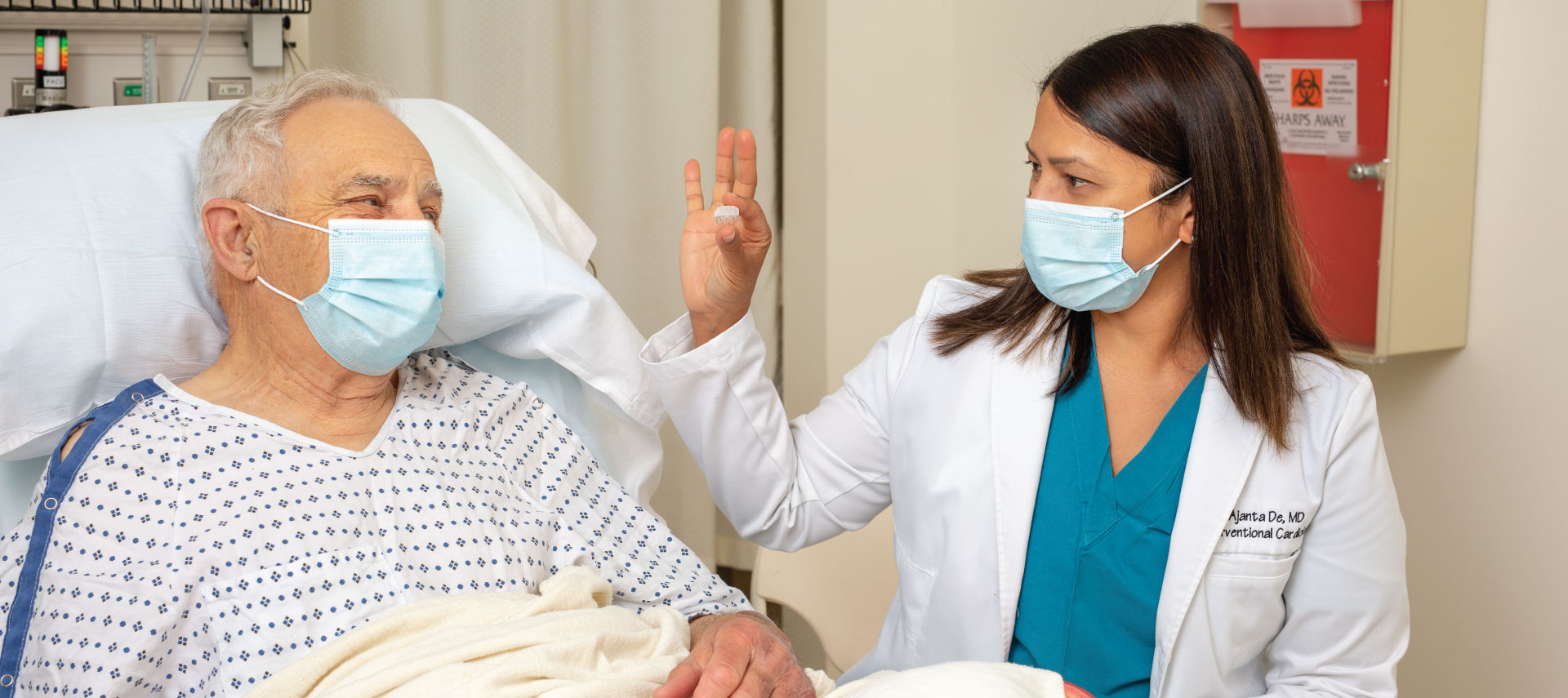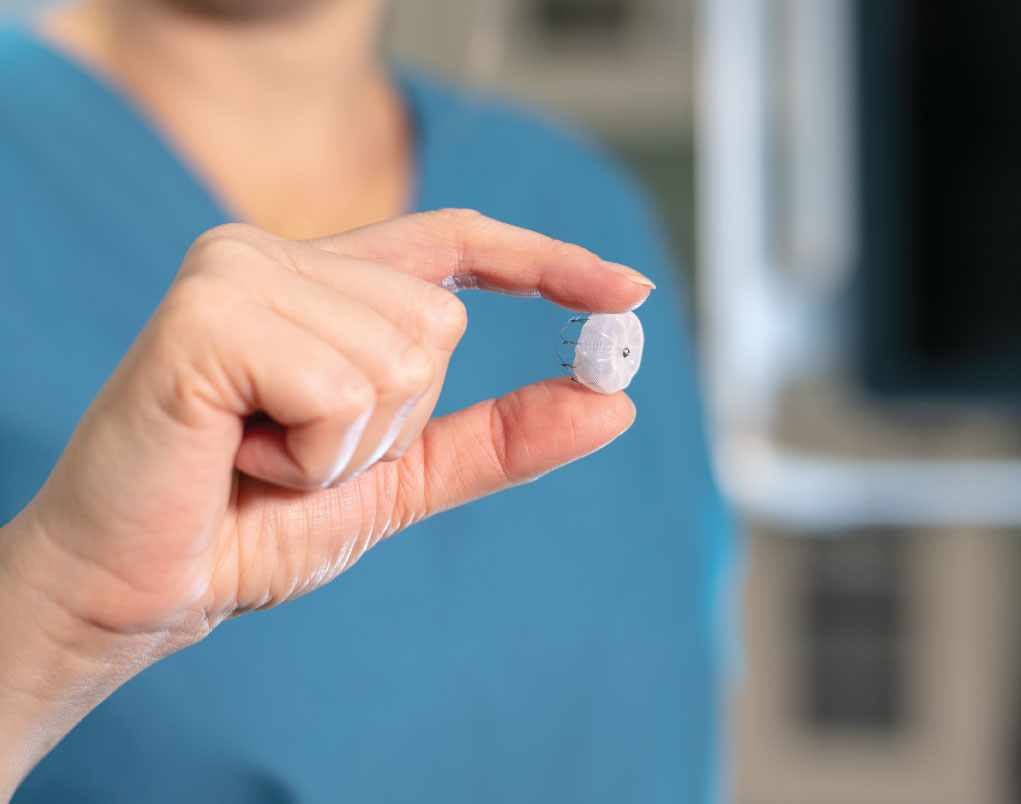
WATCHMAN™ device for AFib
When Robert Stolich turned 82 on May 30, it might have felt like just another day, except he hadn’t been sure he’d still be around to celebrate. Suffering the recent loss of his wife after nearly 60 years of marriage, plus battling atrial fibrillation, which reduces the heart’s ability to pump blood efficiently through the body, he was coping with emotional and physical heart issues, which were keeping him from thriving.
When the heart is in atrial fibrillation (AFib), it quivers instead of pumping normally, which can cause blood to pool in a pocket in the heart called the left atrial appendage. Where the blood collects, it can form a clot, which can break free and travel to other parts of the body, cutting off the blood supply to the brain, and causing a stroke.
On April 27, Stolich was put on an anticoagulation drug to help thin the blood, reducing the risk of clotting and, thus, a stroke.
But that treatment itself comes with a risk.
"The concern with anticoagulation medication is that patients bleed and bruise easily," says Structural Heart Program Coordinator Lisa Nelson, RN, BSN. "Coumadin® (warfarin), among other anticoagulants, is the first-line stroke defense for patients who have AFib because it helps keep clots from forming in that pocket in the heart. Yet, while Coumadin has been the gold standard, it presents huge quality-of-life issues for these patients."

WATCHMAN™ is about the size of a quarter and made from very light and compact materials
There is good news, though, for patients. Blood thinners are no longer the only option to guard against strokes. The advent of the WATCHMAN device has enabled patients with AFib not caused by a heart valve problem to stop taking anticoagulants without increasing the risk of blood clots.
Although the launch was delayed by the pandemic, Tyler Heart Institute has now implemented WATCHMAN therapy into its program. No bigger than a quarter, the implant fits snugly into the left arterial appendage to permanently close it off and keep blood clots from escaping into the bloodstream.
"The WATCHMAN is implanted into the heart in a one-time procedure," Nelson says. "It’s a permanent device that doesn’t have to be replaced and can’t be seen outside the body. The patient goes into the cath lab where, through image guiding, we place the plug into the left atrial appendage. We secure a tight fit and good seal to eliminate blood from transferring into that pocket."
On behalf of Stolich, cardiology intervention specialist Dr. Ajanta De made a small incision in his upper leg and inserted a narrow tube, through which she guided the WATCHMAN device into the left atrial appendage of his heart. The procedure was done in an hour, under general anesthesia. Stolich remained in the hospital overnight and went home the following day.
I feel fortunate that I was a good candidate for the WATCHMAN™ device. Dr. De is very skilled, and she explained the whole process. She got me back into my life, back into my garden, where I can put my hands in the dirt and thrive.
— Robert Stolich
Typically, within a month or so, heart tissue heals over the device, closing off the pocket. In clinical trials, 96 percent of WATCHMAN patients were able to stop taking blood thinners 45 days after the implant procedure. Stolich is among them.
"I feel fortunate that I was a good candidate for the WATCHMAN device," he says. "Dr. De is very skilled, and she explained the whole process. She got me back into my life, back into my garden, where I can put my hands in the dirt and thrive. As long as I’ve got good doctors like Dr. De, I know I’m going to be all right."


